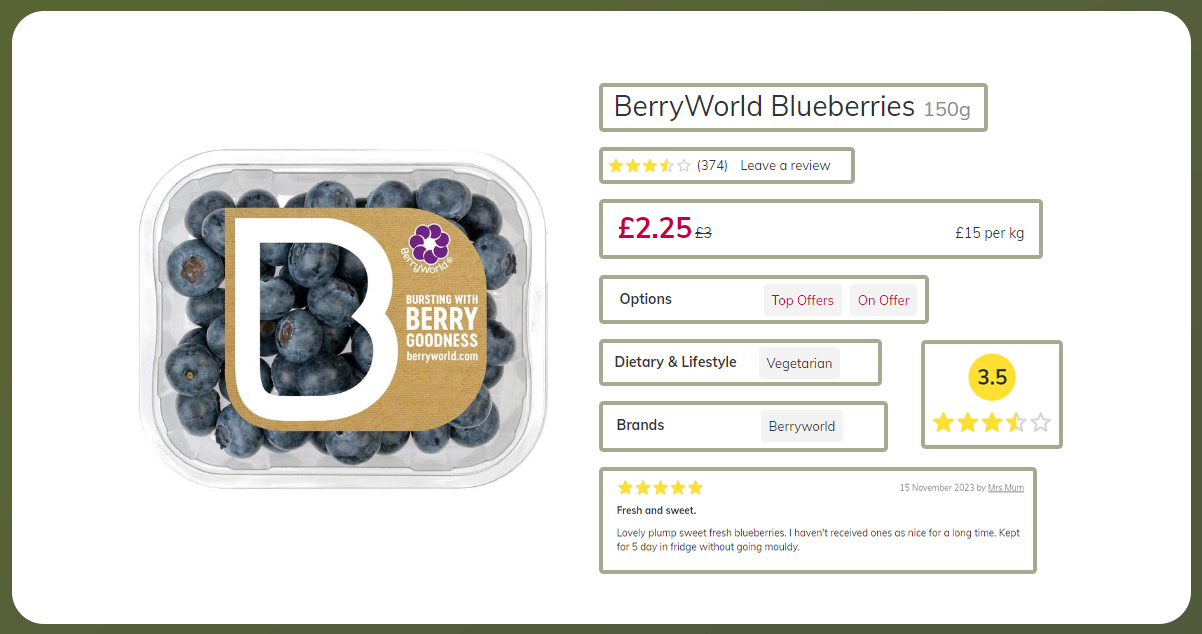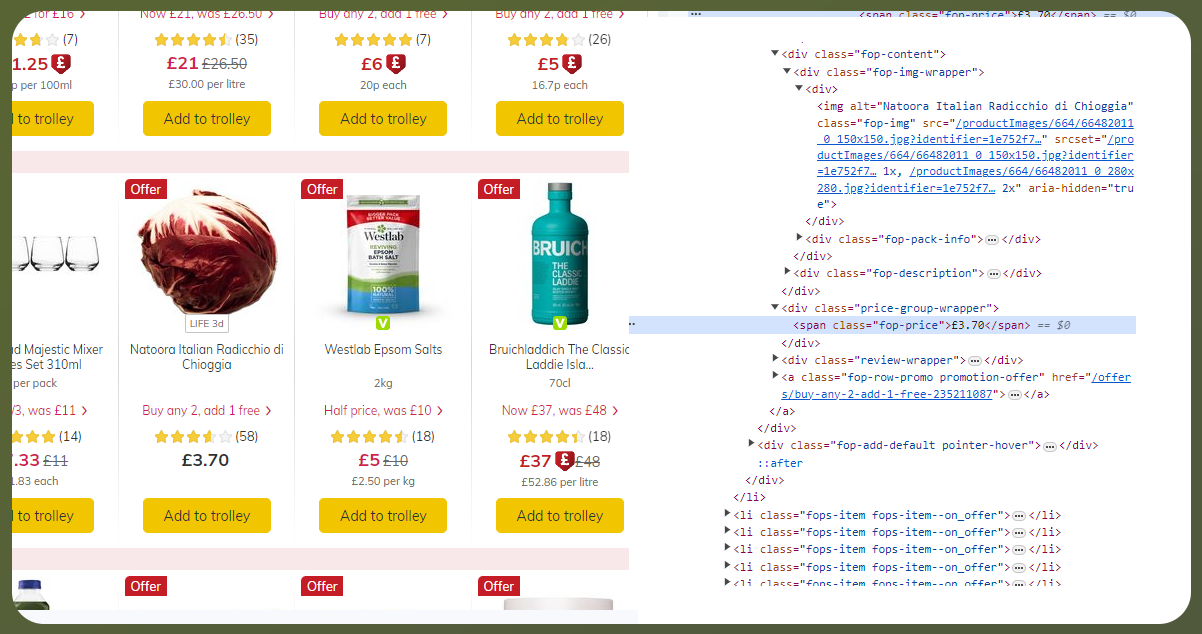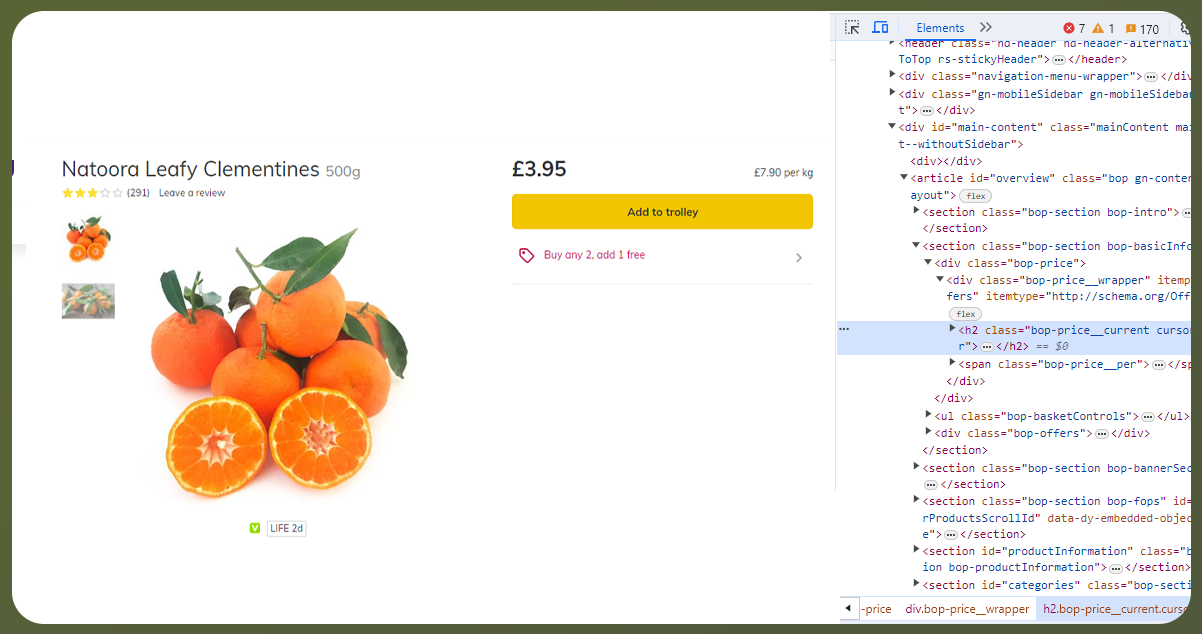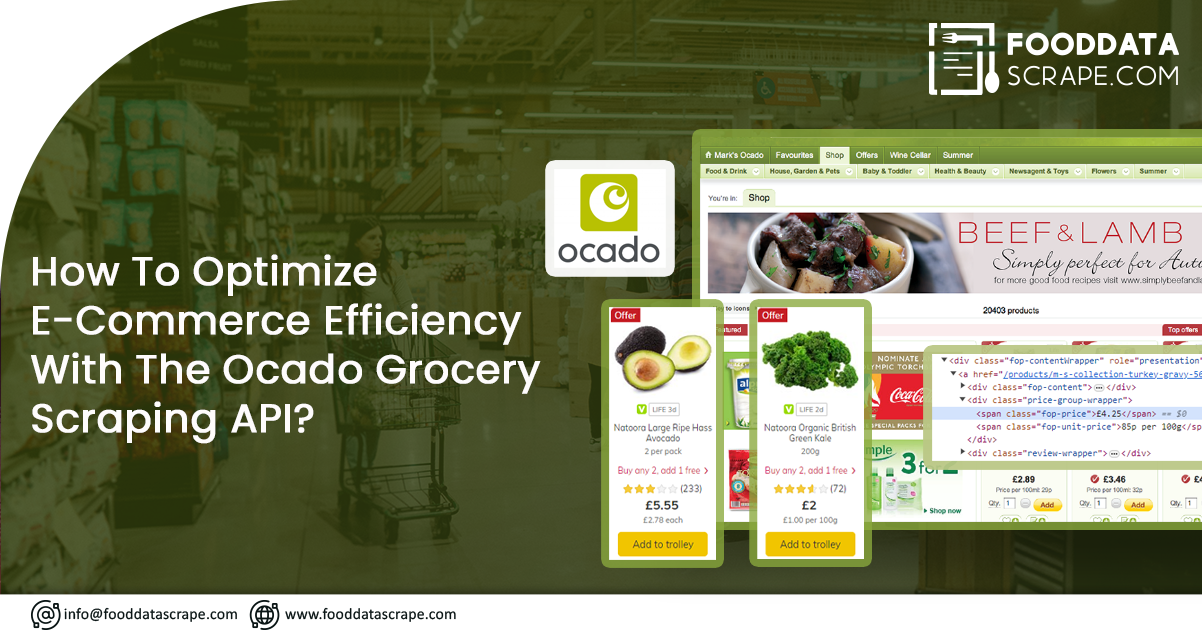Ocado API scraping is a method of extracting data from Ocado's online grocery retail platform using their provided Application Programming Interface (API). Ocado, a prominent e-commerce grocery store, offers this API to allow developers to access and interact with their system programmatically. By utilizing this API, developers can retrieve valuable information, such as product details, pricing, stock availability, and more, in a structured and automated manner. Ocado grocery scraping API is helpful for various purposes, including price monitoring, inventory management, and integrating Ocado's services with other e-commerce systems. However, it is essential to conduct this scraping by Ocado's terms of service and ethical guidelines, ensuring responsible data usage and avoiding disruption to their online operations. This introduction outlines the basic concept of Ocado grocery API scraping, a valuable tool for businesses and developers looking to leverage Ocado's data for various applications and analyses.
List Of Data Fields

- Product Name
- Product Description
- Brand Name
- Category
- Weight
- Ingredients
- Pricing
- Customer Reviews
- Ratings
- Product Images
- Product Variations
- Store Information
- Promotional Information
About Ocado API

Ocado, a leading online grocery retailer, offers an API (Application Programming Interface) that allows developers to access and interact with their platform's data and services programmatically. This API is helpful for various purposes, including web scraping. Developers can leverage the Ocado API to extract grocery data, pricing details, stock availability, and more from the company's online store. This scraping process enables the retrieval of up-to-date data, which can be invaluable for building applications, monitoring pricing changes, or integrating Ocado's offerings with other e-commerce systems. However, it's important to note that scraping Ocado's website or using their API should be done in compliance with their terms of service and ethical guidelines, respecting their data usage policies and not causing any disruption to their online operations.
Features of Ocado API

- Authentication and Authorization: Grocery Delivery Scraping API often requires authentication to ensure secure access. Ocado's API likely uses API keys, OAuth, or tokens to authenticate and authorize users.
- Data Endpoints: The API will provide specific endpoints for accessing different data types, such as product information, pricing, stock availability, etc. These endpoints are URL paths that you can request to retrieve data.
- HTTP Methods: HTTP methods like GET, POST, PUT, and DELETE perform various actions, such as retrieving data, creating new data, updating existing data, and deleting data.
- Data Formats: The API may return data in specific formats, such as JSON or XML, which can be easily parsed and processed by client applications.
- Rate Limiting: Ocado's API might implement rate limiting to control the number of API requests a user can make within a specified period. It prevents overloading their servers.
- Pagination: For large datasets, the API may support pagination, allowing you to retrieve data in manageable chunks rather than all at once.
- Webhooks: Ocado's API might offer webhooks or callback mechanisms that allow your application to receive real-time updates or notifications when specific events occur on its platform, such as changes in product availability.
- Error Handling: The Ocado grocery scraper will provide error responses with detailed error codes and messages to help developers troubleshoot issues.
- Versioning: APIs may have different versions, and you can specify the version you want to use in your requests to ensure compatibility with your application.
- Documentation: Developers can access documentation about the available endpoints, request and response formats, and usage guidelines. This documentation is essential for understanding how to interact with the API effectively.
How to Collect Real-Time Grocery Data Using Ocado API

To scrape real-time grocery data using the Ocado API, you will need to follow a series of steps. Please note that the specific details and endpoints of the Ocado API may change, so you should refer to their official developer documentation for the most current information. Here is a general outline of the process:
- API Access and Credentials: Start by obtaining access to the Ocado API, typically by signing up for a developer account. You'll receive API credentials, such as an API key or access token, essential for authentication.
- Authentication: Authenticate your requests by including your API credentials in the request headers. This step is crucial for accessing the API's data.
- API Documentation: Carefully review the Ocado API documentation to understand the available endpoints, request parameters, and response formats. This documentation guides how to structure your API requests.
- Data Selection: Determine the specific grocery data you want to collect in real-time, such as product information, prices, stock availability, or other relevant details.
- API Requests: Use HTTP requests (e.g., GET) and the appropriate endpoint URLs to fetch the data you need from the Ocado API. Customize your requests based on your data collection requirements.
- Handling API Responses: Process the API responses, typically in JSON or XML format. Extract the relevant data from the responses for further analysis and use.
- Real-Time Updates: If your goal is to collect real-time data, consider implementing webhooks or callbacks provided by the Ocado API. These mechanisms will notify your application when specific events occur, such as changes in product availability or pricing.
- Rate Limiting and Pagination: Adhere to any rate limits set by the Ocado API to prevent overloading their servers. If dealing with large datasets, use pagination to retrieve data in manageable segments.
- Error Handling: Implement error-handling logic to manage issues that may arise during data collection gracefully. Check for error responses from the API and handle them appropriately.
- Data Storage and Automation: Store the collected data in a database or format that suits your application's needs. To collect real-time data continuously, automate the data collection process using scripts or dedicated servers to make API requests periodically.
Why Scrape Ocado Grocery Data?

Scraping Ocado grocery data serves several valuable purposes for businesses and individuals alike. First and foremost, it enables competitive analysis and market research by providing access to real-time information on product availability, pricing, and promotions. This data can inform pricing strategies, product offerings, and inventory management. Additionally, Scrape Ocado grocery data allows customers to make informed choices by comparing prices and product details across various online grocery stores. It is helpful in r price tracking and alert services, ensuring customers secure the best deals. Furthermore, businesses can integrate this data into their e-commerce platforms, creating a seamless shopping experience for their customers. Overall, Ocado grocery data scraping services empower consumers and businesses with timely, accurate information, enhancing decision-making and market competitiveness.
To access comprehensive insights, don't hesitate to contact Food Data Scrape. We offer a comprehensive suite of services, including Food Data Aggregator and Mobile Grocery App Scraping service. Our advanced insights and analytics can elevate your decision-making processes and take your business strategies to new heights. Contact us today to unlock success powered by data!
Get in touch
We will Catch You as early as we recevie the massage
Trusted by Experts in the Food, Grocery, and Liquor Industry






























































































